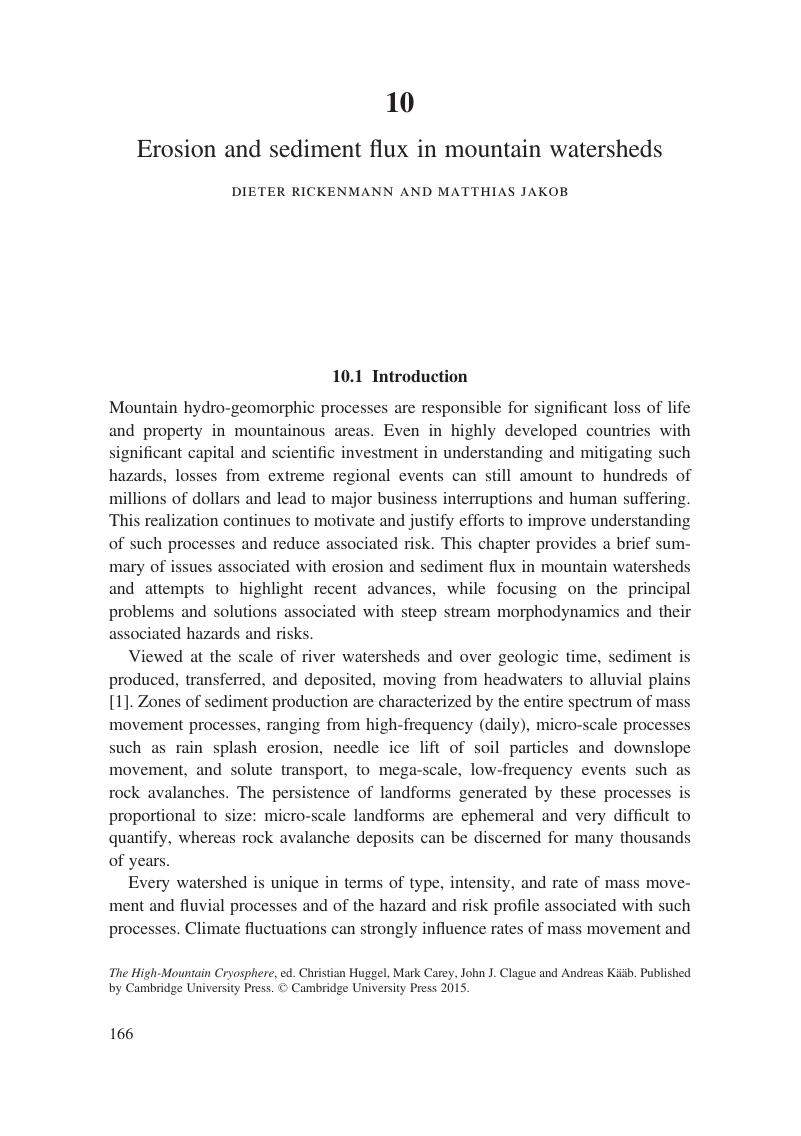Book contents
- The High-Mountain CryosphereEnvironmental Changes and Human Risks
- The High-Mountain Cryosphere
- Copyright page
- Contents
- Contributors
- Book part
- 1 Introduction
- Part I Global drivers
- Part II Processes
- 7 Implications for hazard and risk of seismic and volcanic responses to climate change in the high-mountain cryosphere
- 8 Catastrophic mass wasting in high mountains
- 9 Glacier- and permafrost-related slope instabilities
- 10 Erosion and sediment flux in mountain watersheds
- 11 Glaciers as water resources
- 12 Glacier floods
- 13 Ecosystem change in high tropical mountains
- Part III Consequences and responses
- Part IV Conclusions
- Index
- References
10 - Erosion and sediment flux in mountain watersheds
from Part II - Processes
Published online by Cambridge University Press: 05 September 2015
- The High-Mountain CryosphereEnvironmental Changes and Human Risks
- The High-Mountain Cryosphere
- Copyright page
- Contents
- Contributors
- Book part
- 1 Introduction
- Part I Global drivers
- Part II Processes
- 7 Implications for hazard and risk of seismic and volcanic responses to climate change in the high-mountain cryosphere
- 8 Catastrophic mass wasting in high mountains
- 9 Glacier- and permafrost-related slope instabilities
- 10 Erosion and sediment flux in mountain watersheds
- 11 Glaciers as water resources
- 12 Glacier floods
- 13 Ecosystem change in high tropical mountains
- Part III Consequences and responses
- Part IV Conclusions
- Index
- References
Summary

- Type
- Chapter
- Information
- The High-Mountain CryosphereEnvironmental Changes and Human Risks, pp. 166 - 183Publisher: Cambridge University PressPrint publication year: 2015
References
- 1
- Cited by



